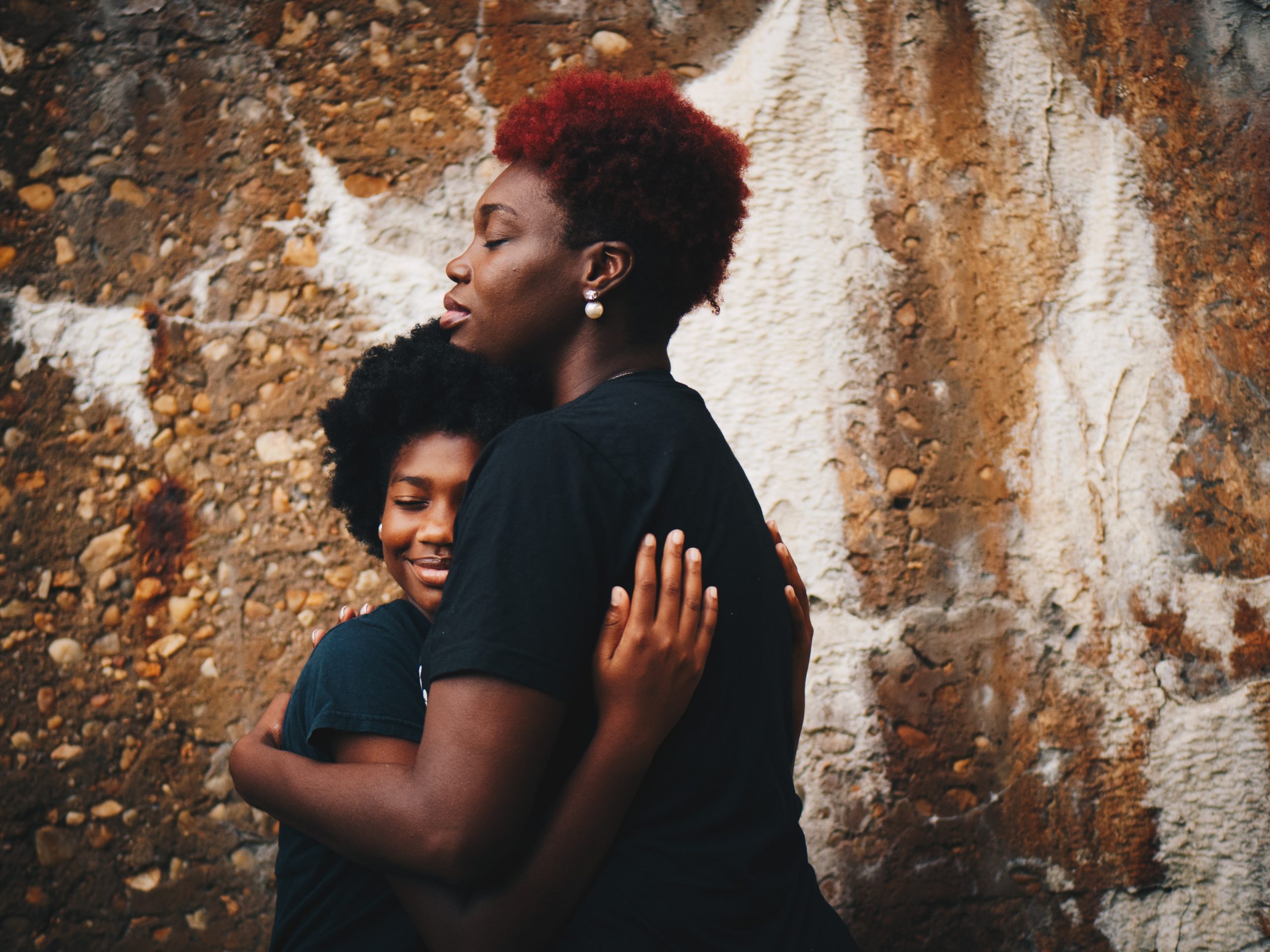We have something at our fingertips, literally, which is so incredibly powerful that it can calm anxiety and gently open the way to brave behaviour. It’s touch, and when we use it in ways that are safe, warm, and invited, it can soothe anxiety and help the brain and body come to rest.
The magic happens in the amygdala, which is also the part of the brain where anxiety happens. The amygdala keeps us safe by constantly scanning the environment for threat and making lightning-quick decisions about whether to avoid or approach. It does its job beautifully, but sometimes it becomes a little overprotective and pushes too hard for avoidance. This is when anxiety can cause more trouble than it deserves to.
A brain that protects is lovely – we want that – but protection in the absence of threat becomes overprotection – and we don’t want that. Protection holds our children back from danger. Overprotection just holds them back. The good news – the great news – is that if you are a trusted someone, you have the most profound capacity to lead the young ones in your care back to a felt sense of safety, calm, and rest. This is the starting point for brave behaviour.
Why the amygdala loooooves oxytocin. (Honestly, it adores it).
One thing that influences the amygdala’s decision about whether to avoid something or move bravely towards it, is the release of oxytocin – the chemical of calm and connect – into the medial region of the amygdala. This is the section of the amygdala that is heavily involved in our reactions to other people, specifically whether to avoid them or move towards them. Sometimes avoidance is a perfect move – some people can be a pity and are best avoided – but sometimes the amygdala can hit the ‘stay away’ button unnecessarily. This can drive anxiety in any situation where there are people – school, unfamiliar or new situations, anything social. The amygdala has receptors designed to receive oxytocin, and when it gets a big luscious dose, the amygdala feels safer and calmer – which means less anxiety, less avoidance, more brave behaviour. We’re wired for touch, and we’re wired to feel safest when we’re closest to our trusted people.
The curious thing about anxious kiddos and oxytocin.
Anxious children, particularly children with separation anxiety, have been found to have lower levels of oxytocin than other children. If physical closeness and touch increases oxytocin, it makes so much sense that many children with anxiety might show clinginess or a fierce need to be close to their important big people.
Oxytocin is released when we feel close to someone we care about. When our kids and teens are in the thick of anxiety, if we are one of their safe people and if they are okay with touch, touching them gently, putting your arm around them, or holding their hand can facilitate a delivery of oxytocin directly to the medial amygdala, reducing the need to avoid.
Don’t forget your nonverbals.
Add the gentle, calming use of nonverbals to the use of safe touch, and the brain’s defence system will start to let receive big messages of safety, and the invitation to let go of its fierce need to protect. The kinds of nonverbals that help with the release of oxytocin are a mutual gaze, parentese (the sing-songy voice we often use with babies and small children), and warm, loving facial expressions. An anxious brain can have a tendency to interpret neutral faces and low monotone voices as threat, so let your vibe be a whole-body one of warmth, invitation and calm.
And the most important part …
Here’s the important part – once the brain has started to register calm, there always has to be encouragement towards brave behaviour. Children will be looking to their important adults for signs of safety. They will pick up on nonverbals, voice, body, gestures quicker than any words we speak, so it is important to assume a leadership presence and send through big messages of safety and your belief that they can move towards that important, meaningful thing that is triggering their anxiety.
This can be tough if you’re also feeling a little anxious about what they’re going through. This is why their brave so often has to start with ours. When you are feeling uncertain, tap into that part of you that knows they will be safe enough, and that they can brave enough.
They’ve got this, because you do.
Touch them, hold them, stay close to them. Let your voice be gentle and your face be warm. Let your presence be strong, calm, and certain. Connect with them by looking them in the eye (also releases oxytocin), align with their brave, then gently move them forward – ‘I know you can do this, love. I know you can.’



I don’t think that in a stressful situation, a child can be calmed by hugs alone, but as one of the methods with an integrated approach, hugs are really useful.
I think hugs are useful at any time of the year)
Deeply encouraging for me and thank you for clear instructions on how to help our children and ourselves. There is so much help in this article, thank you.
I really enjoyed the tone of this article, I’m pretty sure my oxytocin level rose just by reading it! And the words, ‘A brain that protects is lovely – we want that – but protection in the absence of threat becomes overprotection – and we don’t want that. Protection holds our children back from danger. Overprotection just holds them back.’ should be known by every parent. Thank you so much, this article helped me a lot.
Wonderful magic of a hug! Sometimes complex and seemingly uncontrollable feelings like anxiety or panic can be defused by a simple touch.
Thank you, very informative! The scientific explanation is very helpful in understanding how the brain works.
Thank you for talking about this. I have always thought that hugging is a great way to show your feelings and support to a certain person. Although many consider this a manifestation of weakness, especially on the part of a man. But I believe that this is not the case. We all feel morally bad at times, and hugs are wonderful support.
Life in the times of Covid-19 are tough for all, especially the huggers and those in need of one.
Wonderful article.
I love this thank you this is such great encouragement for us as parents. It is so true for my teenager who is challenged with anxiety, he is huge 6ft 3, 15 years old and needs hugs allot, such a beautiful soul this is him all over thank you so much for reminding us and also helping us to understand. thank you 🙂